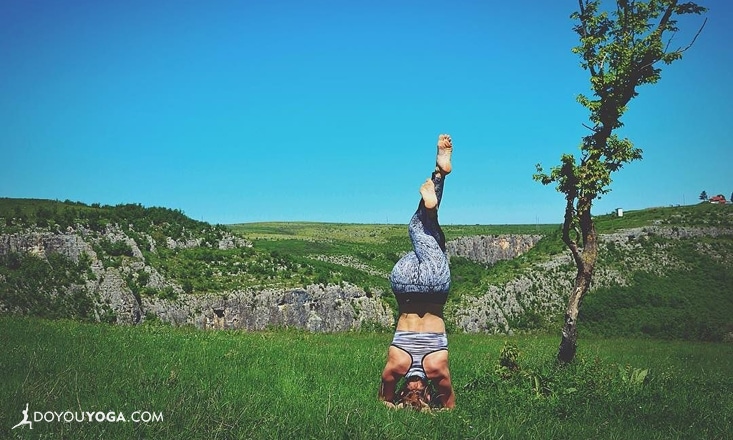Achieving a headstand is one of those incredible moments of accomplishment in a yogi’s practice. While some people seem to have a knack for inversions and challenging poses, those of us who are less inclined need months or even years of practice.
While it can be frustrating to try and fail over and over, I promise, the feeling you get when your legs finally stay put is euphoric. It's an accomplishment of the body, mind, and spirit, and thus requires an alignment of all these dimensions of the self.
These are 5 points to remember in headstand practice and you might just get vertical sooner than you think.
1. Take time to set up your foundation.
Having a solid base is absolutely essential to nailing your headstand. If you don’t take the time to set up properly, you will increase the possibility of getting injured, and greatly decrease the possibility of getting vertical.
First, place your elbows on the mat about shoulder-width apart. The exact distance should be one forearm’s length between elbows. Then, interlace your fingers to create a basket for your head. Roll your forearms away from each other so you are pressing into the outside edge of each arm.
When you place your head in your hands, most of the weight should be on the hands and forearms, not the head. This hand basket is the key, if you are not properly supporting your head, you will have extreme discomfort when you lift your legs.
2. Engage your core.
The real secret to a headstand is that you want your head to be doing the least amount of work possible. Having core engagement will help to support your upper body and take the pressure off of your head. It will also help you to safely and slowly lift your legs overhead so as not to crank your body into position.
3. Find a Drishti.
Headstand is a balancing pose, just like Tree or Warrior III. That means that you need to have a steady gaze to create steadiness in your body.
I generally look at the far edge of my mat. When my eyes start to drift off, I wobble like crazy. Find this point and stick to it if you want to stay upright.
4. Say goodbye to fear.
The first step to getting into headstand is believing that you can. I know, that sounds corny, but it’s so true. For years, whenever a teacher would offer time for headstand I’d think “nope, not for me, that will never happen.” Then a crazy thing happened, a teacher didn’t make it an option. She said “you’re all going to try headstand now.”
With her help and guidance, I learned the proper way to set up the pose. Then, she helped lift my legs overhead and let me lean on her for support. That was all it took to plant the seed in my mind that this pose was actually something I could strive for.
5. Know when to skip it.
There’s a time and a place for headstand. There are also times when practicing headstand is not appropriate. For women, it’s not recommended to practice during your time of the month as it obstructs the natural downward flow taking place in your body.
I would also say to stay away from headstand if you’re having any kind of neck pain. As always, it is important to listen to your body and respect the ebb and flow of your practice.
For those of you building up to headstand, I hope this advice helps to encourage you. For me, there was a day when everything clicked, I made subtle adjustments in my foundation, and my feet seemed to float to the sky.
Don’t be afraid to ask for help from teachers or using the wall as you find your way into this pose, it’s all part of the process!


